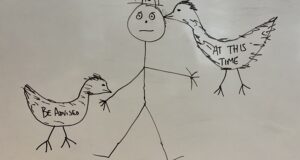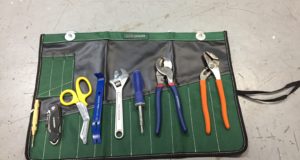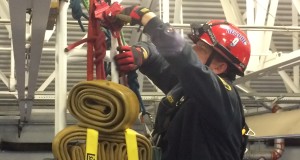I am currently undertaking the most challenging collegiate educational journey of my life in Capella Universities MPA program. Typically, my post’s are on rescue, extrication, and training, but I plan to throw in fire service relevant leadership and motivation posts from the knowledge I gain. This post will help you evaluate your personal leadership style, which in turn will help you lead to greater heights in the firehouse and on the fireground.
Over time many leadership theories have been discussed and debated leading to varying ways to improve organizational environments. One leadership theory the I found applicable to today’s economic environment is the human relations school originating in the 1930’s, which still has a basis for success, yet displays shortcomings that will be discussed in the aforementioned dialogue.
Although the human relations school theory originated years ago, the characteristics are noticeable in leaders still today. A major emphasis in the human relations school during the 1930s was the study of organizational leadership, and how—if at all—leadership affected workers’ behavior and the organization’s general performance (Milakovich, 2009). It takes a hard look in the mirror by a leader to examine their leadership style, however, the performance outcomes of an organization can be positively influenced with firsthand attention to leadership dynamics.
Kurt Lewin, founder of Group Dynamics School at the University of Iowa in the 1930s, conducted a series of experiments designed to test the effects of different types of leaders on the work output and group atmosphere.
The leadership styles were (1) authoritarian—a threatening, intimidating, coercive leader who permitted no nonsense in the work group (often suppressing the high level of energy in many people), who specialized in finding fault with individual workers, and who resorted to scapegoating when things went wrong; (2) laissez-faire (hands-off)—a distant, nonthreatening leader who gave no direction, said nothing concerning cooperation among the workers or the need to keep on working, and give no encouragement; and (3) democratic—a leader who stressed the job “we” had to do, maintains a relaxed and informal atmosphere, was very positive and supportive, encourages employees to do their best, lavished praise for work well done, and encouraged those who were more proficient at a task to assist those who were still having some difficulty (Milakovich, 2009).
Using self-assessment surveys can determine the style of leadership suggested in the human relations theory. Certainly, these styles are important to identify, yet the challenges current environment and economic times create must be considered.
More recent scholars have devoted some attention to shortcomings in the human relations school of organization theory (Milahovich, 2009), they include;
- Failure to take into account the potential for conflict between workers and managers. In an era in need of greater communication, failure to plan, collaborate, and objectively manage glitches in performance or behavior can be disastrous.
- Seems to discount almost entirely the effects of formal structure on the members of the organization. When times are tough, members of an organization look for guidance often through the channels of a hierarchy chart not shown in this theory.
- The complexity of technology employed in an organization may be considerably more important in shaping informal social structure and human interaction than previous expressed. Technology is an ever increasingly important aspect of our organizations that create cost effective options.
In the end the human relations theory gives great opportunity to identify leadership styles, however, the humanistic effects of how those styles motivate and pave a path for an organization need to be adapted to current day conditions. To make this happen we must: focus on continuous improvement; involve and motivate our crews, and satisfy our constituents needs.
Take the linked survey to see what type of leadership you display, then consider alterations to improve your followership and ability to overcome resistance.
Leadership Styles Questionnaire
Pass it on!
Milakovich, M. E., & Gordon, G. J. (2009). Public administration in America (10th ed.). Boston, MA: Wadsworth Cengage Learning. ISBN: 9780495569404
 First Due Tackle Pass It On – Firefighter, Rescue & Extrication Training
First Due Tackle Pass It On – Firefighter, Rescue & Extrication Training





